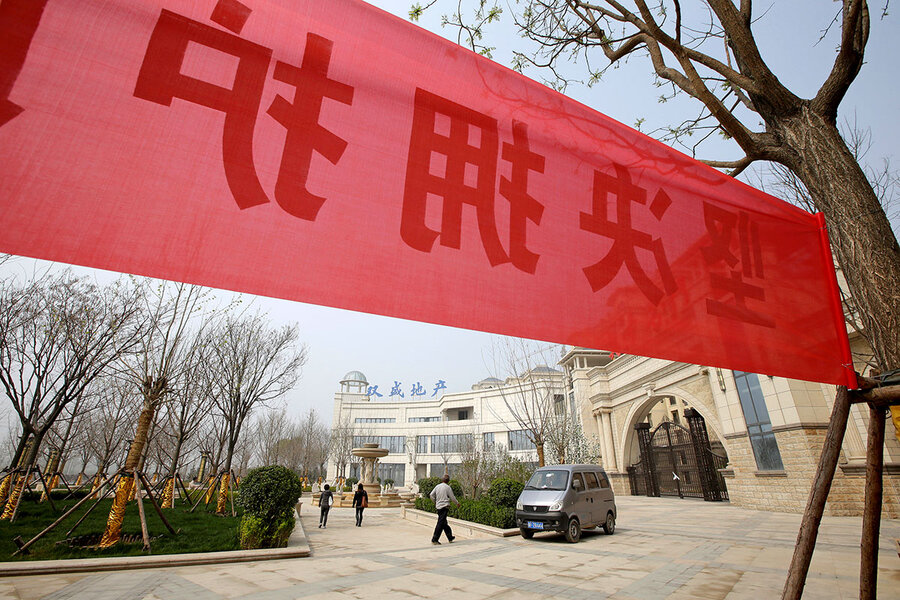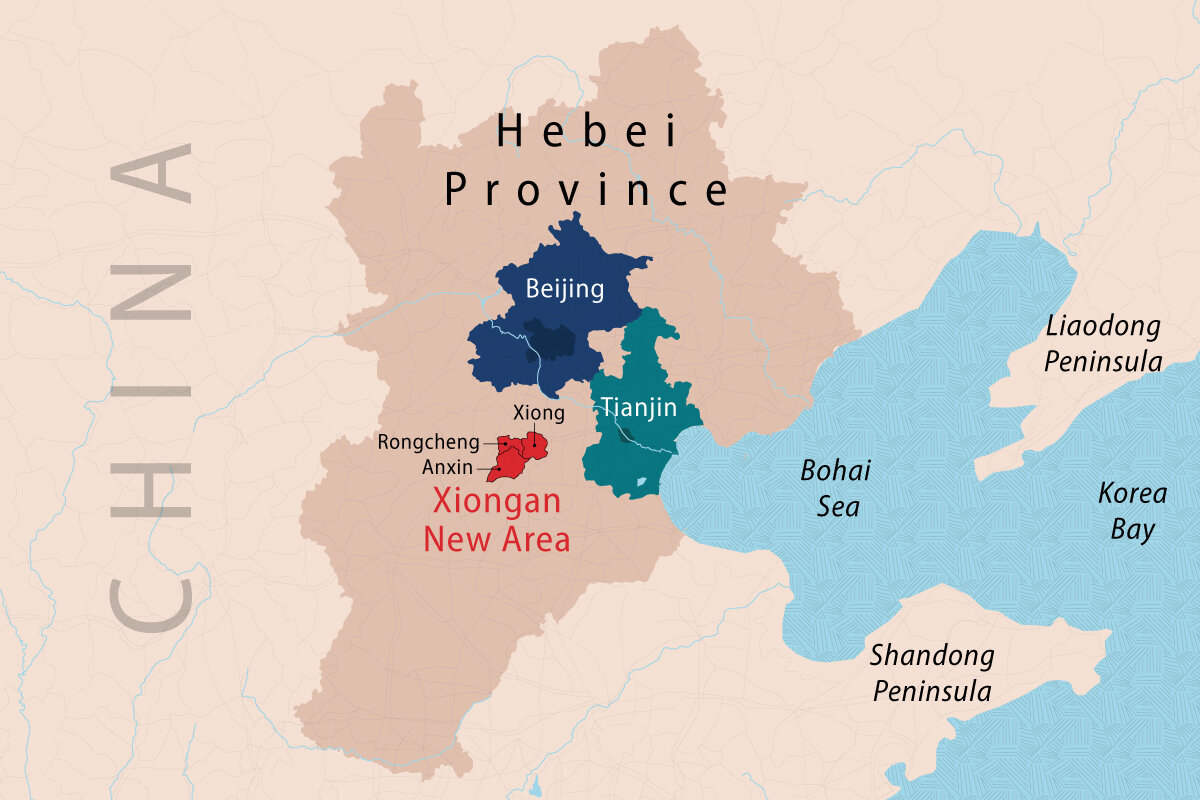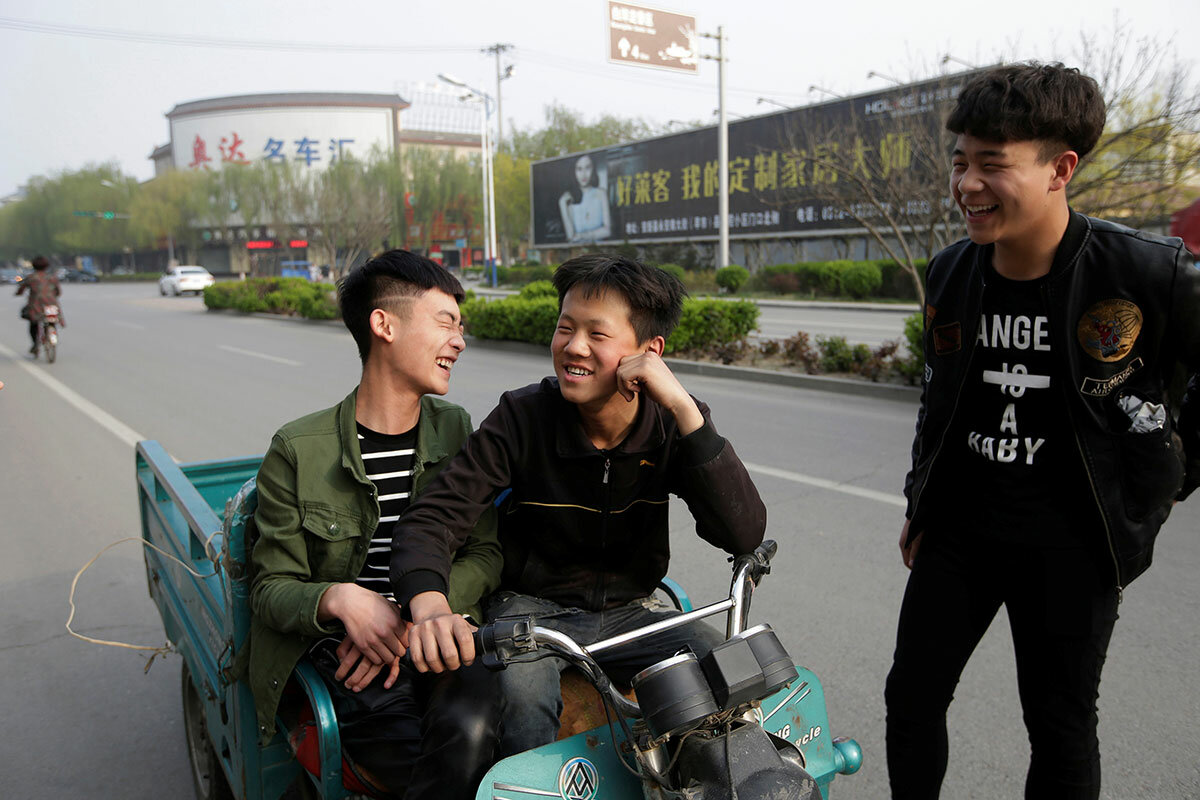Eyeing Beijing's backwater, China sees next megacity as a game-changer
Loading...
| Xiong County, China
Su Jiaxing has had a busy spring. Soon after April 1, when the Chinese government declared plans to create a megacity from scratch in this industrial backwater 70 miles south of Beijing, he hit the road to find a new location for his plastics factory.
Mr. Su has since visited a dozen cities and met with countless local officials in his ongoing search. The government hasn’t explicitly told him to relocate, but he says it’s only a matter of time before it does – and he doesn’t want to be caught unprepared.
Beijing’s ambitious plan for what will someday become Xiongan New Area will likely leave out many of the more than 3,000 plastics manufacturers that have formed the economic backbone of Xiong County for some 30 years. Instead, the new area is intended to become a model city with clean air, a large public transportation network, and high-tech industries. It will eventually cover nearly 800 square miles across three counties – an area more than twice the size of New York City – and be home to more than 2 million people. Government planners envision it as a pillar of a new capital region, diluting the overcrowding that has hampered Beijing, and a gleaming example of China's shift from export-driven manufacturing to consumer-focused growth.
The goal is to make Xiongan “a demonstration area for innovative development,” as Chinese President Xi Jinping says, and particularly to spur economic growth in northern China. But for that to happen, many local factories will be left behind. Strict new environmental regulations will force all but the cleanest ones to shut down; others will likely be forced out by soaring prices. But Su insists he isn’t bitter. In spite of his own uncertain future, he sees the new area as more of a blessing than a curse, especially for his 18-year-old son.
“There will be a lot of opportunities for him,” he says. “That’s why I’m happy. It’s good for the next generation.”
Su’s success as a small business owner has been driven by China’s export-driven economic boom of the past three decades. He opened his factory in 2001, the same year China joined the World Trade Organization, a move that guaranteed the county greater access to the American and other world markets. In his first year, Su had five full-time employees making plastic bags. He now has 36 full-time employees making plastic flower pots and bouquets. His 32,000 square-foot factory, located in an industrial park, is surrounded by more than 40 other plastics manufacturers making everything from PVC pipes to plastic wrap.
China’s entry into the WTO catapulted it to become the world’s second largest economy by 2010. Yet economic growth has slowed in recent years as China tries to develop a consumer-driven economy and reduce its reliance on trade and investment. Meanwhile, in its pursuit of building a “moderately prosperous society” by 2021, the country is no longer content with being the world’s factory floor. It wants to move away from low-end manufacturing in favor of high-tech economic zones, research and development centers, and less-polluting industries.
The plans for Xiongan exemplify the vast economic transformation China is hoping to pull off as it tries to achieve a more sustainable form of growth. The alternative, warn economists, is Japan-style stagnation, or even a debt-fueled financial meltdown.
While the exact details for Xiongan are vague, its development could attract as much as 2.4 trillion yuan ($348 billion) in public and private investment over the next 15 years, according to a Morgan Stanley estimate.
The sheer scale of the project has put it on a path to rival China’s other pre-ordained economic powerhouses: the southern city of Shenzhen and Shanghai’s Pudong district. Shenzhen, once a collection of small fishing villages, has transformed into a 10 million-person hub of high-tech manufacturing and technology, while Pudong is now a center of finance and trade.
“In the past, we can say southern China drove the country’s economic development,” says Zhang Jie, a professor in the Institute of China’s Economic Reform and Development at Renmin University in Beijing. “Xiongan will help with northern China’s economic transformation.”
But Xiongan’s relative isolation in Hebei Province leaves it at a distinct disadvantage compared to its predecessors, which had easy access to world-class ports and foreign investors. For now, extensive infrastructure spending is expected to drive growth across the region.
That means large state-run companies that produce construction materials such as steel and cement are likely to be among the earliest beneficiaries. After the initial development stage, however, Chinese leaders hope Xiongan can help replace the region’s dependence on those same heavy industries.
They also hope it will relieve the pressure on Beijing, which is struggling to cope with a population of more than 20 million. The capital’s rapid growth has fueled complaints about “megacity diseases,” from traffic congestion and air pollution to prohibitive apartment prices. Xiongan provides a convenient cure. The government has announced that “non-capital functions” – such as universities and businesses – will move to the new city.
Together with Beijing and nearby Tianjin, a coastal city of 15 million people, Xiongan is a central part of the government’s plan to unify the capital region. But with the government having announced few concrete development plans, it's little more than hype at this point. It will be years before one of the project’s key questions has an answer: If you build it, will they come?
“This is the biggest challenge it faces,” says Chen Yao, an economics professor at the Chinese Academy of Social Sciences. “The problem is not about money. It’s about making a good environment” so people will want to live there.
For now, locals like Su are just happy to see the government give the region a chance. Su says he was beaming with pride on a recent trip he took to Shenzhen. When a stranger asked where he was from, he didn’t hesitate to answer.
“I felt proud,” Su says. “What Shenzhen has done, Xiongan New Area can do, too.”
Xie Yujuan contributed reporting.









